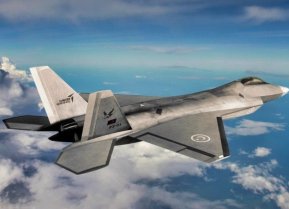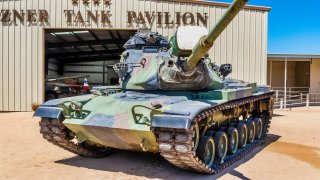The M60 Tank Had Just One Mission
The M60 tank was built with the goal of beating the Soviet Union on the battlefields of Europe or anywhere else this tank was needed to win the Cold War.
Here is the story of the M60 Tank: If you’ve ever driven past a veterans’ memorial building, park, or museum, you may have noticed an American tank on the lawn. This is usually an M60 main battle tank – an armored beast that served the nation well for decades. But the M60 is no museum piece for many countries that still use it. The M60 just refuses to go away totally. It has served in the militaries of 22-nations since its introduction in 1960. Egypt still has 1,700 M60s, Turkey, 932, and Israel, Saudi Arabia, Mexico, Thailand, and Bahrain field hundreds of them. But what makes this old tank so unique?
History of the M60
Development of the tank that became known as the M60 began in 1959, with at least 15,000 produced since then. The M60 was based on the M48 Patton, and the new design yielded many improvements in its engine, armor, main gun, turret, and hull. The United States depended on the M60 to be the go-to tank of the 1960s and 1970s, and it was made to face off against Soviet armor during that era of the Cold War before the M1 Abrams came along. The U.S. Army took the M60 out of service in 1997.
Baseline M60 Specs
The M60 had a 105mm rifled gun barrel. Armor was around six-inches thick with a homogenous steel hull. Four soldiers crewed the tank. A 7.62mm coaxial machine gun was used for enemy troops in the open. It could produce smoke to mask movement.
Twin diesel engines pumped out 750-horsepower with a top speed of 30-miles per hour on roads and a range of 300-miles.
M60 Variants Began Appearing
The M60A1 appeared in 1963 and served in the U.S. Army until 1980. This had a larger turret to give the crew more room. Designers installed better armor.
Engineers worked on the follow-on M60A2 to give it lower profile and a 152mm gun, but that work was stopped, and efforts were then focused on the M60A3. This was the model that became popular worldwide with U.S. allies. It had a computerized ballistics system, thermal sight, a new air filtration system, and a better laser range finder.
M60A3 Was a Hit
Over the years, defense contractors such as Raytheon and General Dynamics Land Systems have worked to upgrade the M60A3 and keep it running for countries who wish to have the most modern version. These features include 120mm smoothbore guns with updated fire control systems.
Israelis Depended on the M60, and It Saw Battle in the First Gulf War
The M60 was used during the Vietnam War, but it wasn’t until the 1973 Yom Kippur War that massive tank-on-tank warfare kept the M60 busy when it served as a fearless armored platform for the Israelis. Israel added explosive reactive armor for use in the Lebanon War of 1982.
Even though the M1 Abrams was the modern main battle tank for Operation Desert Storm, some U.S. Marine Corps and Saudi Arabia’s army units used the M60. It saw much success against the Iraqi T-62.
M60: They Do Have Their Weaknesses
M60s have seen better days, though. The tall turret makes for an easy silhouette for targeting. Ammunition is not stored in a separate fire-walled chamber, so direct hits result in a fireball that the crew doesn’t survive. And it’s no match for modern anti-tank missiles.

The M60 leaves a critical legacy apart from its vulnerabilities. It is a robust piece of armor. Extremely adaptable, it has stood the test of time for many countries. Over the years, numerous upgrades and improvements have kept the M60 running and standing tall to provide a backbone to armies all over the world.
About the Author
Brent M. Eastwood, PhD, is the author of Humans, Machines, and Data: Future Trends in Warfare. He is an Emerging Threats expert and former U.S. Army Infantry officer.


